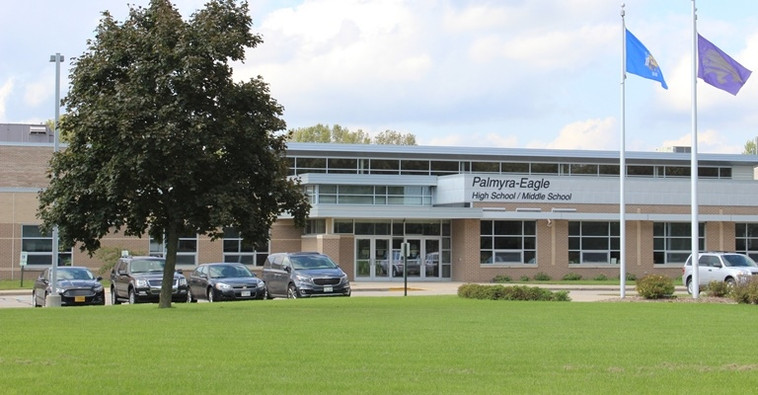Some School Districts Could Disappear
Shrinking population, open enrollment, other factors threaten state's smaller districts.
Wisconsin will have fewer school districts in the next few years. The question if not if, but how many districts will disappear.
Because of declining enrollment, the Palmyra-Eagle school district recently voted to dissolve itself. In August, Urban Milwaukee reported that the St. Francis school system faces challenges to its continued existence. Smaller districts across the state are considering dissolving or merging with a neighboring district.
A lack of school funds is exasperating the situation, but it is only part of the problem. Smaller family sizes, a shrinking rural population and open enrollment all play a role.
In 2000, Wisconsin was below the national average in individuals per household at 3.05 individuals. By 2017, Wisconsin’s average dropped to 2.41. Last year Wisconsin’s population grew by only 0.35 percent, 39th in the nation. In many districts that means there are less kids to educate.
Rural areas are often hit the hardest. In 2017, 352 dairy farms went out of business; in 2018 that jumped to 691. Less farms means less children to educate. Add to that the businesses and shops in a town nearby that once supported those families. They now stand empty and boarded up; those shopkeepers and their families are gone, too.
Open enrollment allows students from one district to attend another district. A statewide drop in student enrollment is leading to a mad scramble by school districts trying to grab as many students as they can from neighboring districts.
Districts with larger student populations are able to provide more class offerings, services and activities than their smaller populated neighbors. The Palmyra-Eagle school district, which voted to dissolve, has only 769 students and has been losing students to seven surrounding school districts, all of which have several times that number of students. Many larger populated school districts are also losing students as well, but they are able to maintain their school populations by cannibalizing smaller neighboring school districts through open enrollment.
In 2013, the Center for American Progress looked at district consolidation and listed Wisconsin as one of the states with the highest number of school districts for its population in the nation, with 446 districts. Compare that with states organized around countywide districts. Maryland has only 24 districts; Florida, with a much larger population than Wisconsin, has just 73 districts.
The Center for American Progress estimates that Wisconsin could save $37 million in taxpayer dollars if smaller school districts were consolidated.
Add to that the 10 union high school districts in this state. When school districts were first set up in Wisconsin, many districts ended at grade eight and only added high schools later. For some of the smaller districts, the solution was not to establish their own high school but rather band together with other neighboring elementary school districts to establish a union high school. Today some elementary school districts have their own school board, superintendent and administration feeding into a union high school also with its own school board, superintendent and administration.
Arrowhead Union High School is an independent district which is supported by seven elementary districts: Hartland-Lakeside, Lake Country, Merton Community, North Lake, Richmond, Stone Bank and Swallow. Nicolet Union High School is supported by three elementary districts: Glendale-River Hills, Fox Point and Indian Hills.
In 2018 the four districts comprising Nicolet seriously considered consolidating into a single district but community members did not want to change from the existing structure.
The Center for American Progress is quick to point out that consolidation, while it would probably save money, may not always improve education. While its report states that the ideal size for a school district may be between 2,000 and 4,000 students, one size does not fit all. School districts must also reform their school-management system. A large district may have bureaucratic waste; smaller districts may not use the best practices in procuring goods and services or use the best management practices.
Whether school districts will save money through consolidation requires a thorough examination, says Robert Butler, Associate Executive Director at Wisconsin Association of School Boards (WASB). School districts that are considering consolidation often have shared agreements with districts that are under consideration for consolidation. They may even share a superintendent, more often a business manager, or teacher specialist in areas like foreign language or special education. Such districts might discover they will not save that much money through consolidation given their existing shared agreements.
In recent years, Butler sees a lot more curriculum coordination among the various school districts feeding into a union high school. No one wants eighth graders coming into the high school algebra class having been taught mathematics four different ways from four different districts. Butler says districts like Arrowhead have a number of shared administrative agreements and try to coordinate their educational programs.
The biggest obstacle to consolidation, especially if the closing of a high school is involved, is the loss of community identity. I heard those concerns in St. Francis when there was discussion of possibly closing its high school and merging with Cudahy. Butler heard similar concerns involving other districts as well. In a small town, you will see T-shirts in the high school’s colors at the hardware and grocery store; half the town shows up for the football and basketball games; and the games are often broadcasted on the local radio station. A loss of a high school is a loss of community identity.
School consolidation is tough, and Butler believes that shared services between neighboring school districts might be an easier sell to the communities. But even this is likely to work only if school districts are willing to work together. A stronger district, both financially and educationally, may feel little incentive to cooperate with its weaker neighbors. In that case, there are likely to be more Wisconsin school districts which simply vote to dissolve and throw the problem of school redistricting back to the state.
The Educator
-
The School Policing Blindspot
 Jul 14th, 2020 by Terry Falk
Jul 14th, 2020 by Terry Falk
-
The Rationale for MPS Referendum
 Jan 14th, 2020 by Terry Falk
Jan 14th, 2020 by Terry Falk
-
How Does Residency Change Affect Teachers?
 Jan 2nd, 2020 by Terry Falk
Jan 2nd, 2020 by Terry Falk





















I agree with the writer that it is not a question of if towns will lose their school districts but how many. This will especially affect many rural areas. I think it is rather ironic that most all rural legislators voted for a State budget which gave provided over $300,000,000 to the School Choice Program while significantly underfunding rural districts. When the local school districts start closing, the local residents will need ask why their elected representatives let this happen.